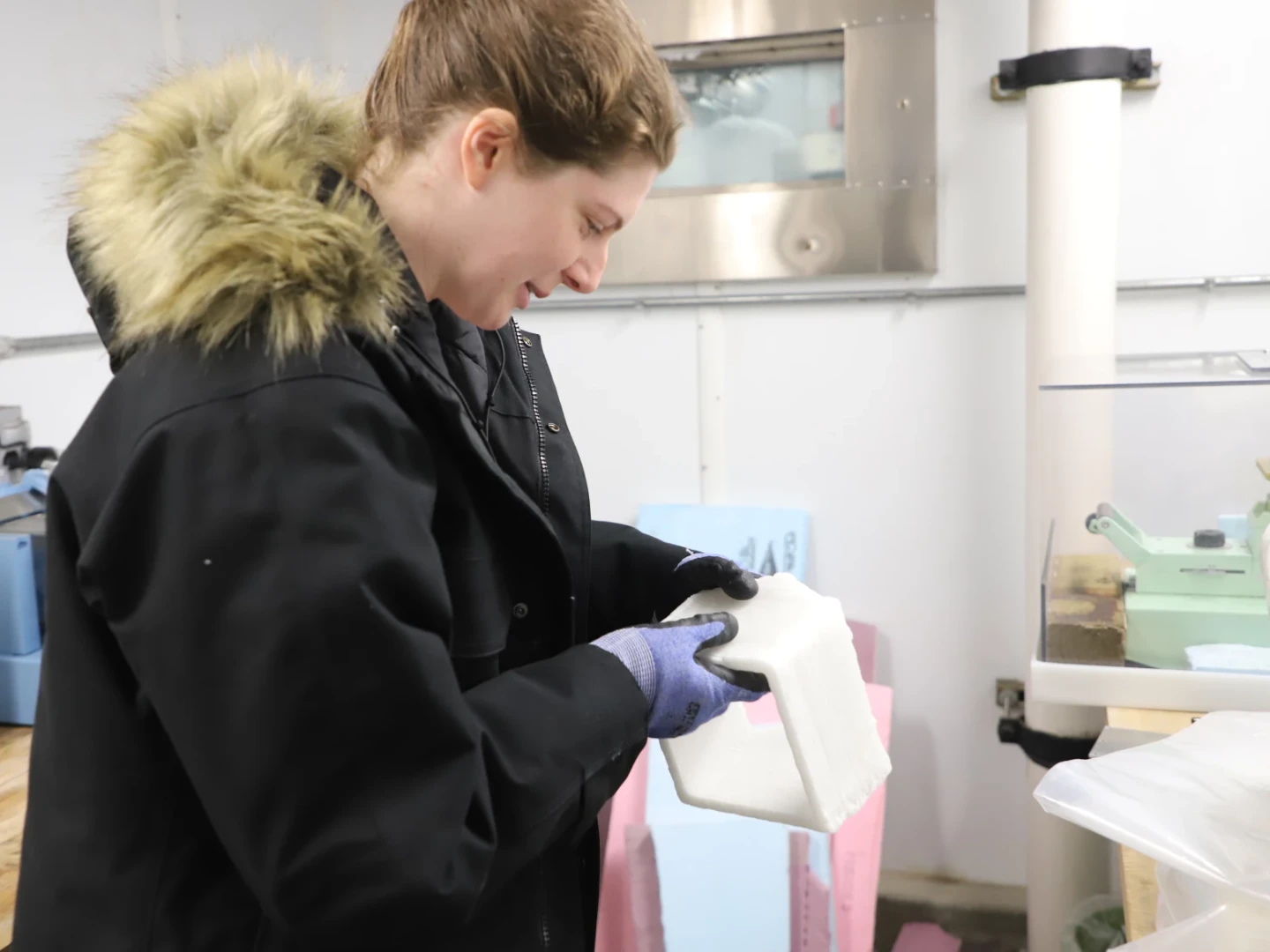In a freezing laboratory in New Hampshire, a modified ceramic 3D printer spits out a structure the size of a toaster, made of ice.
The goal behind the project at the Cold Regions Research and Engineering Laboratory (CRREL), part of the U.S. Army Corp of Engineers, is to use 3D-printed ice as a construction material for things like repairing roads and building igloos in cold, remote places where other materials are hard to come by and human labor in the extreme cold can be dangerous.
“In scenarios where your usual construction methods don’t work, can you use 3D printing with the natural available materials and take advantage of the cold temperatures to use ice instead, to get you whatever you need through the winter?” said Kiera Towell, a research materials engineer at CRREL.
She completed the tabletop ice prototype this spring, which took seven hours to print. Each layer had to freeze completely before the next layer could be deposited. The technology works by using water mixed with tiny fibers made from wood pulp, more than a hundred times smaller than a human hair and entirely biodegradable.
Getting this material to work in a 3D printer has been a balancing act: “Having it be liquid enough that it can flow through your nozzle, and then having it be solid enough that once it’s extruded, it holds its shape before it freezes,” Towell explained.
In the past, people have 3D printed ice on a small scale using liquid nitrogen as a coolant, like when a group of students printed ice cream in the shape of a star. But that’s not practical to scale up.
“You can’t use large plumes of liquid nitrogen to print, say, a small house,” said Emily Asenath-Smith, a materials scientist at CRREL and the project lead.
Now, the team is working on using a larger printer to make bigger, taller structures that will freeze faster.
“The little house, we call the dollhouse,” Asenath-Smith said. “We are now moving to what I’m calling the doghouse size.”
This story was originally published by Vermont Public. It was shared as part of the New England News Collaborative.








